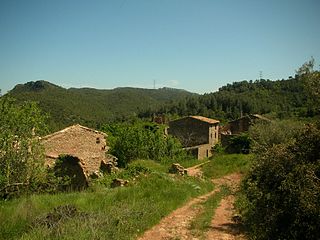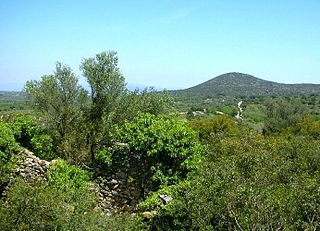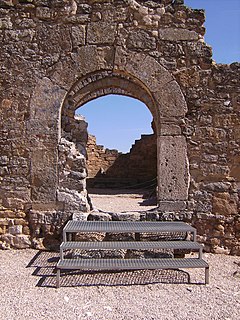 W
WAbdera was an ancient Carthaginian and Roman port on a hill above the modern Adra on the southeastern Mediterranean coast of Spain. It was located between Malaca and Carthago Nova in the district inhabited by the Bastuli.
 W
WAcci was an ancient inland city of Hispania Tarraconensis, on the borders of Baetica. Under the Romans, and with the Jus Latinum, it was a colony with the full name of Colonia Julia Gemella Accitana. Its coins are numerous, bearing the heads of Augustus, Tiberius, Germanicus, Drusus, and Caligula, and the ensigns of the legions iii. and vi., from which it was colonized by Julius Caesar or Augustus, and from which it derived the name of Gemella. According to Macrobius, Mars was worshipped here with his head surrounded with the sun's rays, under the name of Netos. Such an emblem is seen on the coins. The town became Christian at an early date; the Diocese of Acci was established in 47 AD. The bishop is no longer resident in the uninhabited site, but Acci remains a titular see of the Roman Catholic Church.
 W
WAcinipo was a city about 20 kilometers from Ronda, in the Spanish province of Málaga, believed to have been founded by retired soldiers from the Roman legions more than 2,000 years ago. The remaining ruins include a Roman theater still in use today. It is sometimes referred to as Ronda la Vieja despite the fact that Acinipo and Arunda co-existed for centuries.
 W
WSegóbriga is a former Roman city near Saelices, in the province of Cuenca in Spain. It is possibly one of the most important archaeological sites of the Spanish Meseta.
 W
WBaelo Claudia is the name of an ancient Roman town, located 22 kilometres (14 mi) outside of Tarifa, near the village of Bolonia, in southern Spain. Lying on the shores of the Strait of Gibraltar, the town was originally a fishing village and trade link when it was settled some 2,000 years ago. Although prosperous at the time of Emperor Claudius, it went into a decline hastened by earthquakes and was abandoned by the 6th century.
 W
WBelchite is a municipality and village in the province of Zaragoza, Spain, about 40 km southeast of Zaragoza. It is the capital of Campo de Belchite comarca and is located in a plain surrounded by low hills, the highest of which is Lobo. The area around Belchite is one of the most arid places of Aragon.
 W
WCalatrava la Vieja is a medieval site and original nucleus of the Order of Calatrava. It is now part of the Archaeological Parks of the Community of Castile-La Mancha. Situated at Carrión de Calatrava, Calatrava during the High Middle Ages was the only important city in the Guadiana River valley. It thus guarded the roads to Cordova and Toledo.
 W
WCapocorb Vell is a talayotic site located about 12 km from Llucmajor on the island of Mallorca. It is one of the most highly excavated talayotic sites in the Balearic islands. Another such site is Ses Païsses.
 W
WCastell de la Fosca or Punta del Castell is an ancient Iberian settlement or oppidum sited on a rocky promontory at the north end of the beach called Platja de Castell, about 2 kilometres (1.2 mi) ENE of Palamós, on the Costa Brava.
 W
WClunia was an ancient Roman city. Its remains are located on Alto de Castro, at more than 1000 metres above sea level, between the villages of Peñalba de Castro and Coruña del Conde, 2 km away from the latter, in the province of Burgos in Spain. It was one of the most important Roman cities of the northern half of Hispania and, from the 1st century BC, served as the capital of a conventus iuridici in the province Hispania Tarraconensis, called Conventus Cluniensis. It was located on the road that led from Caesaraugusta (Zaragoza) to Asturica Augusta (Astorga). The city declined during the 3rd century and was largely abandoned by the Visigothic era. Clunia is a toponym of Arevacian origin.
 W
WEmpúries was an ancient city on the Mediterranean coast of Catalonia, Spain. Empúries is also known by its Spanish name, Ampurias. The city Ἐμπόριον was founded in 575 BC by Greek colonists from Phocaea. After the invasion of Gaul from Iberia by Hannibal the Carthaginian general in 218 BC, the city was occupied by the Romans. In the Early Middle Ages, the city's exposed coastal position left it open to marauders and it was abandoned.
 W
WEmpúries was an ancient city on the Mediterranean coast of Catalonia, Spain. Empúries is also known by its Spanish name, Ampurias. The city Ἐμπόριον was founded in 575 BC by Greek colonists from Phocaea. After the invasion of Gaul from Iberia by Hannibal the Carthaginian general in 218 BC, the city was occupied by the Romans. In the Early Middle Ages, the city's exposed coastal position left it open to marauders and it was abandoned.
 W
WEscó, or in local Aragonese Esco, is an almost deserted village in the region of Jacetania, province of Zaragoza, Aragon, Spain, located next to the Yesa Reservoir.
 W
WFatges or Fatxes is a ghost town located in the Baix Camp comarca, Catalonia, Spain. It is located 4,5 km to the northeast of Vandellòs town, surrounded by the Tivissa-Vandellós Mountains, within the Vandellòs i l'Hospitalet de l'Infant municipality limits.
 W
WGascas de Alarcón is the site of a former town in the province of Cuenca, Spain. It was flooded by the Alarcón Reservoir, which underwent construction from 1946 to 1970 through the initiative of Valencian farmers who wanted to regulate the flow of the Júcar River.
 W
WVeleia was a Roman town in Hispania, now located in the Basque Autonomous Community, Spain. The site is located in the municipality of Iruña de Oca, 10 kilometers west of Vitoria. The town was an important station on the Roman road ab Asturica Burdigalam that ran parallel to the coast of the Bay of Biscay. At its apogee, the city could have been inhabited by some five to ten thousand people, and apparently went through different cycles of prosperity and decline into the Early Middle Ages until it was finally abandoned.
 W
WItalica north of modern-day Santiponce, 9 km northwest of Seville in southern Spain, was an Italic settlement founded by the Roman general Scipio in the province of Hispania Baetica. It was the birthplace of Roman Emperors Trajan, Hadrian, and Theodosius (possibly). It flourished under the reign of Hadrian, becoming an elaborate urban centre and obtaining the high status of colonia. The modern town of Santiponce overlies the pre-Roman Iberian settlement and part of the well-preserved Roman city.
 W
WJuliobriga (Spanish: Julióbriga, was the most important urban centre in Roman Cantabria, as stated by numerous Latin authors including Pliny the Elder. The site has traditionally been identified with ruins in the village of Retortillo and its Villafría district, in the municipality of Campoo de Enmedio.
 W
WLucentum, called Lucentia by Pomponius Mela, is the Roman predecessor of the city of Alicante, Spain. Particularly, it refers to the archaeological site in which the remains of this ancient settlement lie, at a place known as El Tossal de Manises, in the neighborhood of Albufereta.
 W
WMainake, Menace was an ancient Greek settlement lying in the southeast of Spain, according to the Greek geographer and historian Strabo (3,4,2) and Pausanias of Damascus. Pausanias adds that it was a colony of the Greek city of Massalia. Maria Eugenia Aubet locates it at the site of modern Málaga. The first colonial settlement in the area, dating from the late 8th century BC, was made by seafaring Phoenicians from Tyre, Lebanon, on an islet in the estuary of the Guadalhorce River at Cerro del Villar.
 W
WMazonovo is a former town and now a museum in the municipality of Taramundi, Asturias, Spain. It is located between the Cabreira River and the Turía River, southeast of the town of Taramundi, northwest of Veigas, and 183 km (114 mi) from Oviedo, the capital of Asturias. According to the census of 2005, the population is four people.
 W
WMedina Azahara is the ruins of a vast, fortified Andalus palace-city built by Abd-ar-Rahman III (912–961), the first Umayyad Caliph of Córdoba, and located on the western outskirts of Córdoba, Spain. It was the de facto capital of the Caliphate of Córdoba as the heart of the administration and government was within its walls.
 W
WMerades is an ancient abandoned village located in the Montsià comarca, Catalonia, Spain.
 W
WNumantia was an ancient Celtiberian settlement, whose remains are located 7 km north of the city of Soria, on a hill known as Cerro de la Muela in the municipality of Garray.
 W
WOiasso, Oiasona or Oiarso was a Basque Roman town located on the left bank of the Bidasoa estuary in the Bay of Biscay. Archaeological evidence unearthed recently pinpoints the core area of Oiasso in the old quarter of Irun (Gipuzkoa) by the Spanish-French border, where harbour and bath remains have been discovered. However, two other focuses in Cape Higuer and hermitage Ama Xantalen point to a wider complex outside the main nucleus.
 W
WPollentia was a Roman city founded by Quintus Caecilius Metellus Balearicus in the present city of Alcúdia, allegedly in the year 123 BC. The first documented remains belong, however, to the first half of the 1st century BC. This had led the researches to establish the possibility of the creation of a castra by the military expedition that, a generation later, would derivate in the current city of Pollentia.
 W
WReccopolis, located near the tiny modern village of Zorita de los Canes in the province of Guadalajara, Castile-La Mancha, Spain, is an archaeological site of one of at least four cities founded in Hispania by the Visigoths. It is one of the only cities in Western Europe known to have been founded between the fifth and eighth centuries.
 W
WSegeda is an ancient settlement, between today's Belmonte de Gracián and Mara in the province of Zaragoza, Aragon, Spain. Originally it was a Celtiberian town, whose inhabitants, the Belli, gave it the name Sekeida or Sekeiza.
 W
WSes Païsses is a Bronze Age talayotic settlement on the southeastern outskirts of Artà in northeastern Majorca. It is one of the most important and best-preserved prehistoric sites in the Balearic Islands, although it is largely overgrown with woodland, mainly Quercus ilex, making it impossible to see the site as a whole.
 W
WSeseña is a municipality located 35 km south of Madrid in the La Sagra comarca, province of Toledo, Castile-La Mancha, Spain. According to the 2009 census (INE), the municipality had a population of 16,231.
 W
WTermantia, the present-day locality of Tiermes, is an archaeological site on the edge of the Duero valley in Spain. It is located in the sparsely populated municipio of Montejo de Tiermes.
 W
WTorre d'en Galmés is a Talayotic site on the island of Menorca, between Alaior and Son Bou, Menorca. The town developed from the start of the Talayotic era and expanded until the end of the Roman occupation, after which it was abandoned. Buildings were reoccupied and adapted by Muslim refugees from the Reconquista until the end of the Muslim occupation of the island.
 W
WVallcarca is an abandoned coastal settlement in the Garraf Massif, Catalonia, Spain. It is administered by the Sitges municipality.